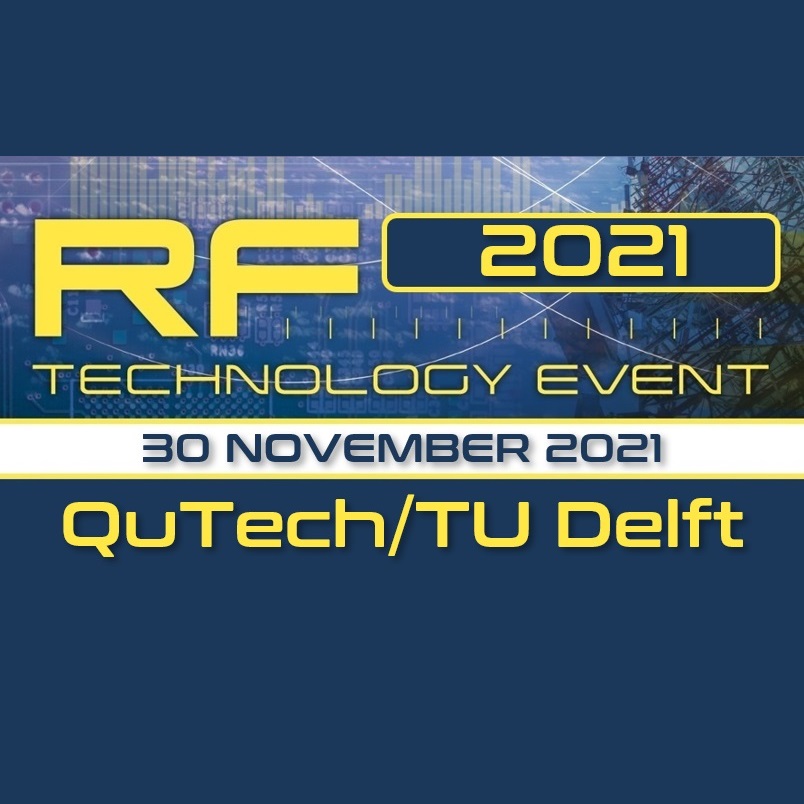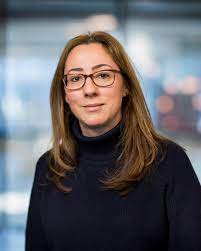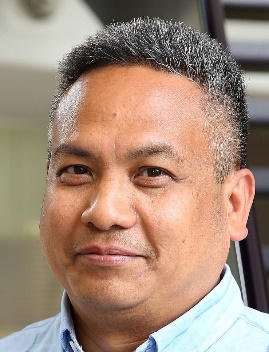
Recent advances in optical communications

Recent advances in optical communications
De verwachting is dat optische communicatie- en netwerktechnologie een krachtige impuls zullen krijgen door de inzet van kunstmatige intelligentie (AI) en de ontwikkelingen op het gebied van kwantumcommunicatie.
De recente ontwikkelingen in fotonische silicium chips en het gebruik van optische spatial-division multiplexing spelen inmiddels een sleutelrol in de interne datacentra netwerken die nodig zijn om de exponentiële groei van data in de cloud te ondersteunen.
Ondertussen zijn software-gedefinieerde optische netwerken, zowel gebaseerd op glasvezels als draadloos, flexibeler, programmeerbaar en beter afstembaar op de applicatiebehoeften, dan vorige generaties, waardoor flexibelere diensten en met een kortere time-to-market kunnen aangeboden worden.
Het doel van dit KIVI Telecom-webinar was het presenteren van enkele van deze belangrijke ontwikkelingen en hun rol in de nieuwe generatie optische netwerken. De presentaties waren in het Engels. Lees de eerdere ontwikkelingen in het blad De Ingenieur: Quantuminternet stapje dichterbij of onder "Documenten", tevens de slides van de presentaties en de lijst met Afkortingen en Verklarende Teksten.
Speakers:
Title: Photonic Integrated Neural Networks
Abstract: Compared to the human brain, AI is extremely inefficient. That is why the human brain has increasingly become a source of inspiration for how we want computers to function. Photonics is recognized to be one of the key-technology to revolutionize computation, using light to process information instead of electrons.
With this presentation I will explain how we exploit photonics for data transport and calculations on-chip for potentially faster and energy-efficient computation engines.
With the right architecture and inspired by AI models, we can perform a virtually unlimited number of operations simultaneously on photonic integrated chips, with a much lower energy consumption.
 About the speaker: Patty Stabile is Associate Professor at Eindhoven University of Technology within the Electro-Optical Communication (ECO) system group. In 2011 she has been visiting scientist for 1 month at University of Cambridge (UK), and in 2018 at MIT (US). In 2016, she was awarded the Early Career Women in Photonics – Special Recognition for her contribution to large-scale photonic integrated circuits for high-connectivity and high-capacity optical switches.
About the speaker: Patty Stabile is Associate Professor at Eindhoven University of Technology within the Electro-Optical Communication (ECO) system group. In 2011 she has been visiting scientist for 1 month at University of Cambridge (UK), and in 2018 at MIT (US). In 2016, she was awarded the Early Career Women in Photonics – Special Recognition for her contribution to large-scale photonic integrated circuits for high-connectivity and high-capacity optical switches.
She is board member of the IEEE Photonics Benelux Chapter since 2016 and member of the TU/e Young Academy of Engineering since 2018. She is author and co-author of more than 100 journal and conference papers in prestigious photonics conferences.
She is expert in large-scale photonic integrated circuits for high-capacity nodes for next generation optical networks. She is now considering her state-of-the-art photonic integrated matrices for application in optical computing.
Title: Short-Range Optical Wireless Communication
Abstract: Optical wireless communication (OWC) has been considered as an enabling technology for sixth generation (6G) wireless communication networks through enhancing the support of ubiquitous mobile ultra-broadband, ultra-high speed with low-latency communication, and ultra-high data density services.
OWC offers a large license-free spectrum in the optical domain and it does not interfere with RF signals, hence can be used to augment RF communication to provide extra communication bandwidth.
My talk will mainly focus on OWC technology for short-range applications. I will discuss the current OWC technology a.k.a. LiFi and its next generation that employs steerable laser beams, wide field-of-view detectors, and device localization/tracking.
 About the speaker: Eduward Tangdiongga leads the research activities on advanced optical access and local area networks of Electro-Optical Communication System group. The research focuses on exploring optical transmission techniques for short-distance networks where the network simplicity, throughput and costs play an important role. The research areas include passive optical networks, digital/analog radio over fibers, multimode silica/plastic optical fibers, photonic-assisted wireless technology, and optical wireless.
About the speaker: Eduward Tangdiongga leads the research activities on advanced optical access and local area networks of Electro-Optical Communication System group. The research focuses on exploring optical transmission techniques for short-distance networks where the network simplicity, throughput and costs play an important role. The research areas include passive optical networks, digital/analog radio over fibers, multimode silica/plastic optical fibers, photonic-assisted wireless technology, and optical wireless.
Eduward Tangdiongga received the M.Sc. and Ph.D. degrees from the Eindhoven University of Technology, The Netherlands, in 1994 and 2001, respectively. In 1994, he joined the COBRA Research Institute, now Institute for Photonic Integration, working in the field of high-speed optical switches using semiconductor optical devices.
From 2001 he has participated in several European Union and Dutch research programs targeting for ultra-fast optical signal processing in a long-haul link. From 2006 when he was appointed as an Assistant Professor, he focused his research fields on integration of various wired and wireless services for short-haul networks such as access and in-home/in building networks. In 2016 he became an Associate Professor on the topic of advanced optical access and local area networks.
Title: Optical Switching for Disaggregated Datacenter Infrastructures
Abstract: Diverse cloud workloads with different resource requirements and the advent of AI applications result in a 40% under utilization of the servers in conventional server-centric architecture, which is a huge waste of resources and power consumption since the servers account for 85% of the total cost of data center.
Limited hardware resources of each server may also degrade the application performance when available resources cannot meet application requirements, and in particular for AI computing clustering.
To flexibly accommodate various XPU (CPU, GPU, TPU) and memory intensive applications, a novel disaggregated DCN architecture consisting of independent hardware (like XPU, memory, and storage) nodes has recently been considered by industry and academics, such as Facebook Open Computing Project, Intel Rack Scale Architecture, and European “dRedDBox” Project.
Benefiting from decoupling network resources, it’s easy to achieve fine-grained efficient provisioning and dynamic scheduling of individual resources across jobs in disaggregated data center.
However, innovative DC networks with low latency and high bandwidth are crucial to support the network performance of disaggregated architecture. The talk will discuss the requirements of latency and bandwidth as well as the photonic switching technology to implement the disaggregated network infrastructure.
We present an experimental prototype rack-scale disaggregated architecture based on nanoseconds optical switches and discussed the network performance assessment in terms of latency and bandwidth.
 About the speaker: Dr. Nicola Calabretta received the M.Sc. degree in telecommunications engineering from Politecnico di Torino, Turin, Italy, in 1999. In 2004 he received the Ph.D. degree from the Eindhoven University of Technology, Eindhoven, The Netherlands.
About the speaker: Dr. Nicola Calabretta received the M.Sc. degree in telecommunications engineering from Politecnico di Torino, Turin, Italy, in 1999. In 2004 he received the Ph.D. degree from the Eindhoven University of Technology, Eindhoven, The Netherlands.
From 2004 to 2007 he was with Scuola Superiore Sant’Anna University, Pisa, Italy where he was involved in the EU project IST-NOBEL I and IST-NOBEL II. In 2007 he worked as PostDoc at the Technical University of Denmark, Denmark. He is currently working as Associate Professor at Eindhoven University of Technology and member of the Institute of Photonic I ntegration (IPI) Research Institute at TUE.
He has participated to several EU projects (COSIGN, LIGHTNESS, EURO-FOS, and other nation projects: MEMPHIS, TOSCA, KOREA-ITALY Bilateral project), and currently involved in EU B5GOPEN, TWILIGHT, WON, 5G-MOBIX, 5G METRO-HAUL, WIDE5GNET, QAMELEON, PASSION, OLYMPICS projects focusing on the development of a high-performance photonic switched networks for 5G and cloud computing. He co-authored over 440 journal papers and conference proceedings and holds 6 international patents.
His fields of interest are 5G, optical metro-access edge computing network, low latency Industry 4.0 architectures, optical data center networks and interconnects, high performance optical networks for telecom and datacom, and photonic integrated optical switching circuits. He is a member of the TPC of several conference such as ECOC, OFC, Photonics in Switching and Computing, IEEE CSNDSP, IEEE ICC, IEEE COMNETSAT, IEEE IBP, and NOC. He is the co-founder of the company Microalign b.v. for high precision fiber to optical chip alignment and assembly.
Links
Denkwerk: De nieuwste ontwikkelingen in kwantumcomputers
